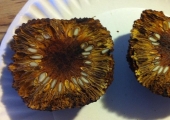

 8
8




Some places need to be wild
 4
4




Cargo bikes are cool
 3
3




A woodlot is a parcel of a woodland or forest capable of small-scale production of forest products (such as wood fuel, sap for maple syrup, sawlogs, and pulpwood) as well as recreational uses like bird watching, bushwalking, and wildflower appreciation. The term woodlot is chiefly North American; in Britain, a woodlot would be called a wood, woodland, or coppice.
Invasive plants are Earth's way of insisting we notice her medicines. Stephen Herrod Buhner
Everyone learns what works by learning what doesn't work. Stephen Herrod Buhner
 5
5




If there is one thing the Wizard of Oz has taught me, it is not to trust school teachers on bicycles.
 4
4




seeking mutualism, discovering trees










 6
6




Some places need to be wild

 4
4




 4
4




Eric Hanson wrote:Hello,
1). Fast growing (for obvious reasons)
2). Have great heating value
3). Useful as lumber
4). Rot resistant
5). Copice easily (or pollard easily)
6). Disease resistant, grows on most any soil
7). Anything else?
Eric
Nothing ruins a neighborhood like paved roads and water lines.
 6
6




If there is one thing the Wizard of Oz has taught me, it is not to trust school teachers on bicycles.










 6
6




Some places need to be wild










 5
5




Some places need to be wild
 3
3




I make a Maple Syrup instructional movie! Check it out HERE
SKIP books, get 'em while they're hot!!! Skills to Inherit Property
See me in a movie building a massive wood staircase:Low Tech Lab Movie










 5
5




Some places need to be wild

 2
2




 . The following two posts on the ‘blog are “lessons learnt”: things we did right and things we wish we’d done differently.
. The following two posts on the ‘blog are “lessons learnt”: things we did right and things we wish we’d done differently.
How Permies works: https://permies.com/wiki/34193/permies-works-links-threads
My projects on Skye: The tree field, Growing and landracing, perennial polycultures, "Don't dream it - be it! "
 8
8






 5
5




 5
5




 1
1




Skandi Rogers wrote:One that hasn't been mentioned, sycamore. horrible weed tree here, but it is fast growing, straight grained and decent firewood. It can be coppiced or left to grow as a tree.
Small-holding, coppice and grassland management on a 16-acre site.

 5
5




Hans Albert Quistorff, LMT projects on permies Hans Massage Qberry Farm magnet therapy gmail hquistorff




 3
3








Eric Hanson wrote:...if one were to deliberately plant and grow a wood lot
Check out my podcast! https://allaroundgrowth.buzzsprout.com/ ~ Community Group Chat: https://t.me/allaroundgrowth
 3
3








Rob Kaiser wrote:
Eric Hanson wrote:...if one were to deliberately plant and grow a wood lot
Quick thought:
Consider looking into NRCS/EQIP programs if you are going to plant a lot out.
I make a Maple Syrup instructional movie! Check it out HERE
SKIP books, get 'em while they're hot!!! Skills to Inherit Property
See me in a movie building a massive wood staircase:Low Tech Lab Movie
 3
3















 2
2




Some places need to be wild







 2
2




 1
1














 1
1




Some places need to be wild








